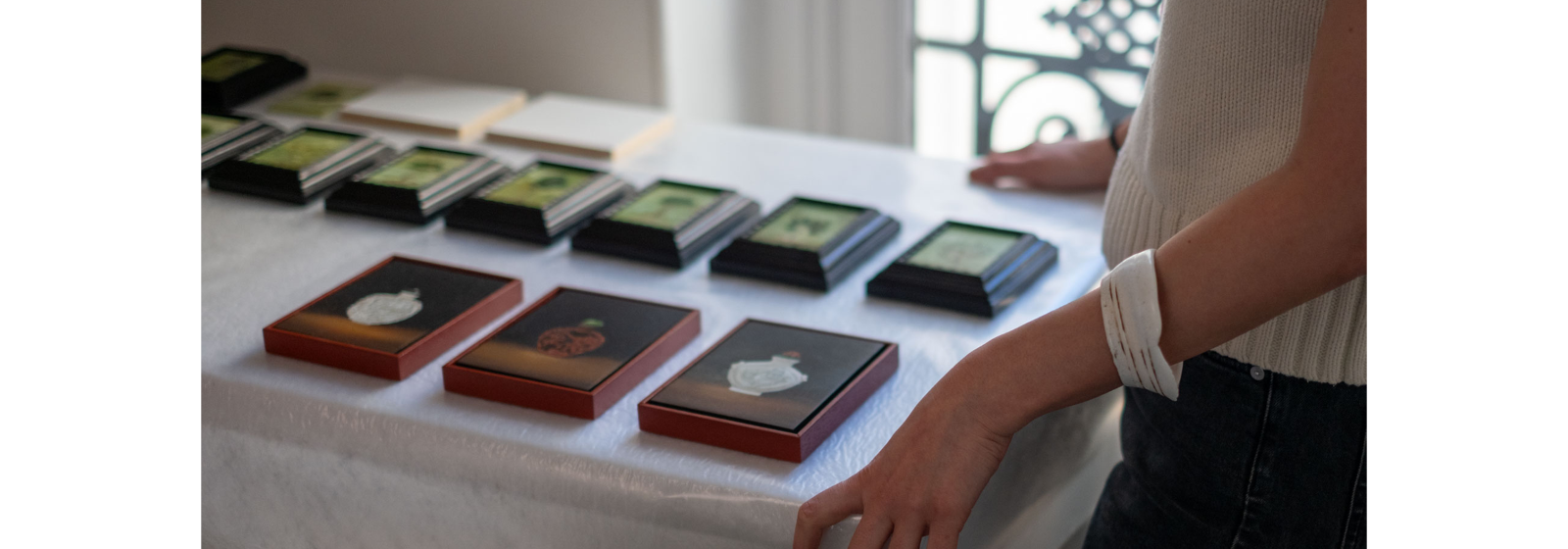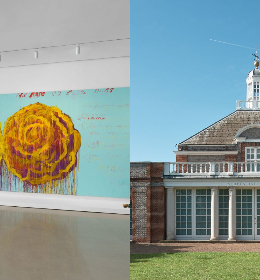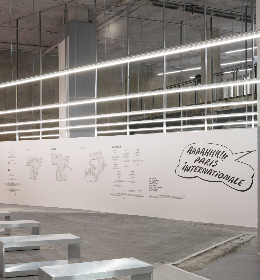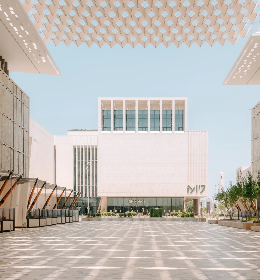

Sanam Katibi, Rise, 2025. Courtesy of the artist and Mendes Wood DM. Photo credit: Pauline Assathiany.
She refuses to be confined to a single identity. Her work and vision reflect a duality, an ambition to depict a world full of tensions and ambivalence, offering allegories of our ambiguities. She explores the grey area between feelings and postures that are seemingly contradictory.

Khatibi's work is a reflection of her visual surroundings, filled with vanities, still lifes, and idyllic landscapes. In her paintings, embroidery, tapestries, and sculptures coexist with flowers, snakes, Chinese ceramics, nude bodies in motion, and skulls.


"I grew up surrounded by objects from all over the world, inherited from my mother, a diplomat, who also collected tapestries. When she passed away, I recovered her Chinese and Japanese porcelain. After initially hating them, I have now integrated them into my paintings."


"As artists, we always create in relation to the world we live in, shaped by our experiences. For me, things have been a bit hectic, and so this is expressed in my work."

Once an avid traveller, Khatibi is now absorbed in her art, the price of success. Her new Parisian studio - perfectly organised - "is where I live. I need to see my works evolve, alternate between large formats, which require a long drying time, and small ones, which are more instinctive."
2025 marks a chapter for her, with her first solo exhibition in Paris, at the Mendes Wood DM gallery.

Sanam Khatibi, Put Your Honey Where Your Mouth Is, 2025. Courtesy of the artist and Mendes Wood DM. Photo credit: Nicolas Brasseur.


The creation process takes time. "I always start with sketches and then let the elements develop as I go. Even for large canvases, I begin with a small landscape, and the rest comes naturally. The work is done in successive layers. In a way, it is a subconscious process." Things align just right: "When I'm not working, I get bored. Painting is my passion, and I'm lucky enough to make a living from it. I just want to paint."
In the middle of an apartment-studio that looks like a cabinet of curiosities, an 18th-century Japanese black mask stands beside a collection of phalluses. "I am drawn to our animality," says the artist, adding that the collection "refers to the theme of fertility."


When asked about her influences, she enthusiastically lists: "China, 16th-century Flemish tapestries, the Bayeux tapestry, Etruscan, Egyptian, pre-Columbian, Oceanic, and Renaissance art, as well as primitive art, Hieronymus Bosch, Cranach, Frida Kahlo, Carol Rama, Henry Darger, Stéphane Mandelbaum, Leon Golub, Nancy Spero..."

Sanam Khatibi, Even the Wildest Grass Must Bend, 2025. Courtesy of the artist and Mendes Wood DM. Photo credit: Nicolas Brasseur.


Refusing to leave her works untitled, the artist keeps a notebook dedicated to the titles of her pieces. "I take a lot of notes, and when a piece of work is finished, I look at the work and choose from the list I've made. Then, either I ask friends to help me decide, or it comes naturally." Khatibi smiles, recalling: "The piece you were asking about is called Everything's at Home Except Your Wife."
Sanam Khatibi, "The Hunger", April 3 - May 17 2025 - Mendes Wood DM, Paris
Sanam Khatibi’s work can also be discovered in the exhibition "You Stretched Diagonally Across It: Contemporary Tapestry" - April 11 - October 12, 2025 - Dallas Contemporary, Dallas
Since 2023, a permanent sculpture by Sanam Khatibi has been on view at Les Jardins de la Persagotière in Nantes, France.
Photos by Quentin Geiger for Happening Media.
Text: Henri Robert.









